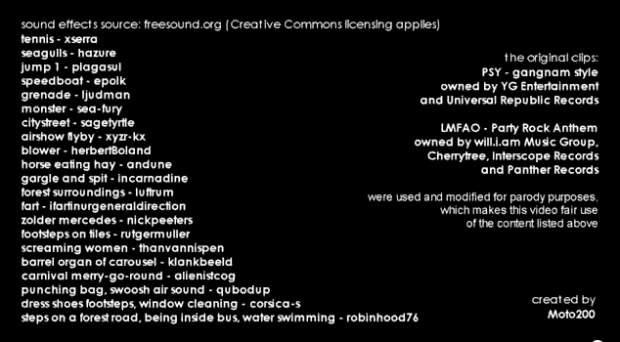Do We Live In A Visual Culture?
It’s common to say we live in a visual culture, where images are more important than sounds or words. But, is this true?
It’s common to say we live in a Visual Culture, where images trump sounds, words and even ideas. There’s a certain amount of truth to this claim, but pushed to the extreme, as it often is by some commentators, it doesn’t hold up to scrutiny.
Gangnam Foley
By now I’m sure you’ve seen the massivley popular video for Gangnam Style, a worldwide hit for K-Pop artist PSY. One of my favourite blogs, CreateDigitalMusic, posted a brilliant video where the music is replaced by only the sounds you “see” on the screen, or as it is called in film-making, foley sounds. As Peter Kirn writes,
“Think we live in a “visual” culture? Maybe not so much – watch what happens, or, rather, listen to what happens if you remove the music from a music video. Foley, that ingredient in filmmaking that winds up being as important as light, is essential. And the results are oddly compelling, perhaps more so without the music video.”
Take a look at the clip for yourself,
All the sounds come from FreeSound, an excellent Creative Commons sound sample library. Here’s a screen grab from the closing credits of the clip, where you can see the samples used.

Why This Matters
Of course, the visuals were central to the success of Gangnam Style. But, replace the music with natural sounds and we are left with something amusing and interesting, but hardly likely to set the world on fire.
Right now I’m seeing lots of new podcasts and online video programmes, with people using tools like YouTube, Vimeo along with affordable video cameras to share their thoughts, ideas and experiences. It’s a great trend.
But all too often, these producers are not matching the investment in visuals (including often expensive logos and design elements) with equally compelling sound. The result makes their work feel generic, flat and often, it has to be said, cheap.
However important visuals are in our culture, humans are hugely sensitive to sound, we are hardwired for it in very deep ways. Sound puts images in context and can enhance or detract from the emotional power of a visual. Our culture is more than just a visual culture.
Most listeners can’t explain very well the difference in sound between a good microphone and a poor one But, they can hear it (easily) and will make judgements accordingly. Background noise and room noise are perceived in similar ways – they are a subconscious clue to the difference between a “professional” (sounds like Radio/TV) recording and an amateur one.
And, we haven’t even begun to talk about what the music you choose says about your production values!




